
The Official Edgar Rice Burroughs Tribute Site Since 1996 ~ Over 15,000 Webpages in Archive |

The Official Edgar Rice Burroughs Tribute Site Since 1996 ~ Over 15,000 Webpages in Archive |

|
Presents ISSUE 0604 |
 |

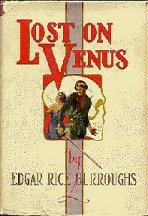
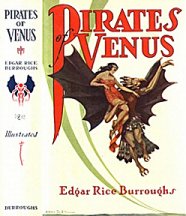
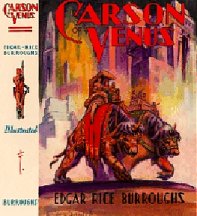
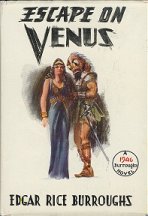
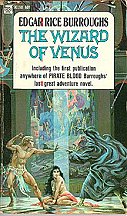 |
In Pirates of Venus (first published 1932),
Edgar Rice Burroughs introduced his readers to yet another of his many
heroes, Carson Napier. Unlike John Carter, the other major spacefaring
hero of ERB's, Carson's background is relatively well known. Carson himself
tells the entire story in the first chapter of Pirates of Venus.
However, the background is sketchy and without any dates whatsoever. This
article is an attempt to try to establish as closely as possible when each
event in Carson's life took place, and also to put Carson's background
into a general historical perspective.
Unless otherwise noted, all quotes and other information
regarding Carson's background have been taken from Pirates of Venus
(henceforth referred to as PV), chapter one, which is appropriately
titled "Carson Napier".
Childhood YearsThe first question we want to answer is: When was Carson born? We know that Carson's age when he came to Venus was twenty-seven (PV/5). If we assume that this was in 1931 (as will be conclusively proven below), then he was born in either 1903 or 1904.
Unfortunately Carson's father died when Carson was "not quite eleven." This, then, would seem to have been in 1914 or perhaps 1915. We shall never know exactly how his father died. There were no actual battles in India during World War I, but Indian forces (led by British officers) entered the war on other theatres in late 1914 and met with heavy losses, especially on the western front. If Carson's father remained in India, he may have fallen victim to a Sikh terrorist; their activity increased about this time. Another possibility is that he died in a hunting accident, since he would sometimes hunt tigers (WV/8). 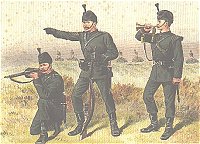 If, as would seem to be the most probable alternative, Carson's father died on the western front in the winter of 1914/1915 then Carson must almost certainly have been born in the first few months of 1904.
|
Education and Development
After the death of his father, Carson and his mother moved to her home state Virginia. There they lived with Carson's great-grandfather, Judge John Carson, until about 1918 when John Carson died, leaving a fortune to his heirs. About this time, Carson also started to take an interest in sports, among them wrestling (PV/5).
Carson and his mother moved again, this time to California where Carson "attended public schools and later entered a small college at Claremont, which is noted for its high scholastic standing and the superior personnel of both its faculty and student body." This college must be Pomona College, which was the only college in Claremont in the early 20's. Also, both Hulbert and Jack Burroughs (ERB's sons) attended Pomona at the time that PV was written, so it must often have been on ERB's mind.
The typical age for first-year students at the time was 18, but it is known that Carson was intelligent and a fast learner, so it is quite possible that he moved more quickly through the school system and enrolled at age 17, in 1921. Considering his later career as a rocket constructor and spacefarer, it seems likely that Carson took classes in Engineering, Mathematics and Astronomy, although he must have slept through the course in Celestial Mechanics. Carson may also have taken courses in Economics, German, Military Science and Psychology, for instance.
During his college years he became a good boxer (middleweight and later heavyweight) and swimmer, winning "several medals for distance swimming" (PV/5). There was no boxing team at Pomona until the mid 30's, so Carson must have been a member of a non-academic club. He graduated with honors (LV/15), perhaps at the age of 21 in 1925 (the average age of graduating students was 22 at the time). His mother died shortly thereafter.
After his mother's death he became an aviator. He was probably a skilled pilot within a year and so must have entered the profession of Hollywood stunt pilot about 1926. Aviation films were booming at this time, and although good pilots from the World War were plentiful, it was probably easy to find a job. The best known of the many films in which Carson may have participated is the epic silent Wingswhich was filmed about this time.
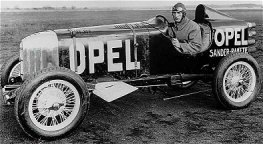
One Year of Preparations
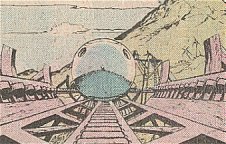
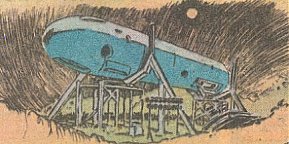
The rocket cars gave him inspiration for his project to go to Mars. The rocket took over a year constructing, so if take-off was in 1931 then we can assume that he embarked upon the project in the beginning of 1930. He chose Guadalupe Island off the coast of Mexico as the place for take-off. Guadalupe (an extinct volcano) has a permanent population of about 100 individuals and my guess is that it was about the same in 1930.
After having contacted Burroughs in PV, Carson awaited a reply in the Mexican town Guaymas. However, Guaymas is quite far from Guadalupe, and in the wrong direction from Tarzana. So why would Carson wait there? The probable answer is that he must have had some sort of headquarters set up in Guaymas. A place from where he could coordinate shipments to the island and his contacts with Mexican authorities.
Mexican presidents in 1930 were Emilio Portes Gil and Pascual Ortíz Rubio. The former was president until February and may have been the one to sign the permission to use Guadalupe. This seems all the more likely considering that Portes Gil had previously served as a judge in Sonora, the region to which Guaymas belongs. It is somewhat strange that Carson was allowed to Guadalupe, since the island had already in 1928 been made a wildlife reserve. But Mexico was at the time a young and unstable nation where a few bribes to the right persons could achieve miracles.
Carson apparently designed the rocket himself, but requested the help of others when it came to calculating the exact trajectory that the rocket had to describe. Among others, he enlisted the help of "one of America's most famous astronomers" (WV/1). Who was this astronomer? We will never know, but we can guess. The astronomer in question was probably interested in Mars and also probably believed in the possibility of life on Mars.
By far the most famous astronomer in early 1930 (to the general public, at least) was Clyde Tombaugh. In March, his discovery of Pluto was announced and his name was on the front pages of newspapers around the world. Before starting his search for Pluto he had investigated Mars, although I have no idea what he thought about life there. But with the excitement surrounding Tombaugh's discovery, it seems doubtful that he had time to make any calculations for Carson. Other possible names are Earl C. Slipher (who, like Tombaugh, worked at the Lowell Observatory), William Coblentz and Carl Lampland.
The only astronomer with whom we can be reasonably certain that Carson had direct contact is his Astronomy professor at Pomona. It seems probable that he was one of those astronomers who "checked and rechecked" Carson's calculated route through space (WV/1). That professor would have been Frank Parkhurst Brackett, who was professor of all Astronomy courses at Pomona while Carson was there.
A Game of Dates
This brings us up to the events in PV. But when exactly does the novel begin? The latest possible date is marked by ERB finishing writing the book on November 6, 1931. The events in the book encompass a period of about three months, earth time. Thus, even if writing begun before Carson had made his final report, the initial events must occur before early August.In the novel Burroughs refers to an operation he has been going through, and ERB did in fact go through an operation in January 1931. It is, of course, well known that this Burroughs is a fictional character, not the same one that wrote the books in the real world. But the fictional Burroughs was in many respects autobiographical, and so I think we can assume that both the real and the fictional Burroughs were operated on at the same time. Thus, the earliest time that the novel can begin is February.
By looking at two key dates it is possible to specify the month of departure even more. Burroughs received the letter from Carson on the tenth, and since mail would only be delivered on weekdays it could not be in May (the tenth was on a Sunday). Ralph Rothmund helped Burroughs find the letter on the fourteenth, and assuming that Rothmund only worked Mondays through Fridays we can, using the same kind of deduction, rule out February, March and June.
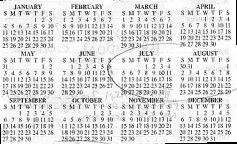
ERB and Rothmund ~ 1931 CalendarApril and July remain. The exact date of departure can almost be calculated. Carson left Guadalupe on the thirteenth and was gone "less than a week" (PV/2) before he returned on the day of take-off, which then has to be either eighteenth or nineteenth. Since Rothmund worked on the day that Burroughs received Carson's telegram and on the next day, that must have been Thursday the sixteenth and Friday the seventeenth (April and July dates always fall on the same days of the week). Carson returned to Guadalupe "early the following morning."
Now we can rule out April because the moon was new (and thus in the general direction of the sun) on April 18. While it is true that it was still not in a correct position in July, it was nevertheless slightly better (or worse, from Carson's point of view). In addition, earth is always much closer to the orbit of Mars in July than in April (even though it should be pointed out that in 1931 Mars was not to reach the closest point until months later; in fact, 1931 did not offer a good launch window at all). Thus, the date of departure was probably July 18, 1931. The text indicates that launch was in late afternoon or evening.
| Year | Event |
| circa 1904 | Born in India. |
| circa 1915 | Moves with mother to Virginia after father's death. |
| circa 1918 | Moves with mother to California after John Carson's death. |
| circa 1921 | Enrolls at Pomona College in Claremont. |
| circa 1925 | Graduates from Pomona College. Mother dies. |
| circa 1926 | Becomes stunt pilot in Hollywood. |
| circa 1927 | Begins traveling around the world. |
| 1928 - 1929 | Finances rocket cars in Germany. |
| 1930 | Starts building rocketship for Mars. |
| 1931 | Takes off from earth on July 18, landing on Venus August 18. |
It is well known that ERB was sometimes careless with the details of his historical facts, but in this particular case, everything fits together perfectly. Only the minor problem with the positions of the celestial bodies of the solar system at the time of take-off remains, and unfortunately no amount of reasoning is going to take us around that.Fortunately, there is always the final way out: Since we know that Mars and Venus and the Moon are different in ERB's fantasy universe than in our real, we can always claim that their paths through space are also different. After all, this is just fiction.
Sources
References in the text are given with title abbreviation and chapter number. The following stories by Edgar Rice Burroughs have been referenced:Pirates of Venus [PV] Lost on Venus [LV] (pocket version) The Wizard of Venus [WV] Thanks
I would like to extend my deepest thanks to Beverly-Jene Coffman for all the help with information about Pomona College in the 1920's and to Bill Hillman for the layout and for helping out when I was unable to find the right illustrations.

|
Guadalupe Island A History of Hollywood’s Aerial Cinematography Will Rogers Who is Will Rogers? Will Rogers State Historic Park Opel Rak-1 |
ERBzine 0220 Illustrated ERB Pulp Bibliography ERBzine 0344 JCB Venus Gallery: EV ERBzine 0345 JCB Venus Gallery: CV ERBzine 0220 ERB Pulp Mag Illustrated Bib ERBzine 0253 Amtor Mantania Art I: LV ERBzine 0254 Amtor Mantania Art II: PV ERBzine 0219 Lost Words of ERB Index |
![]()
![]()
![]()
Volume
0604

BILL
HILLMAN
Visit
our thousands of other sites at:
BILL
& SUE-ON HILLMAN ECLECTIC STUDIO
ERB
Text, ERB Images and Tarzan® are ©Edgar Rice Burroughs, Inc.-
All Rights Reserved.
All
Original Work ©1996-2004/2010/2024 by Bill Hillman and/or Contributing
Authors/Owners
No
part of this web site may be reproduced without permission from the respective
owners.